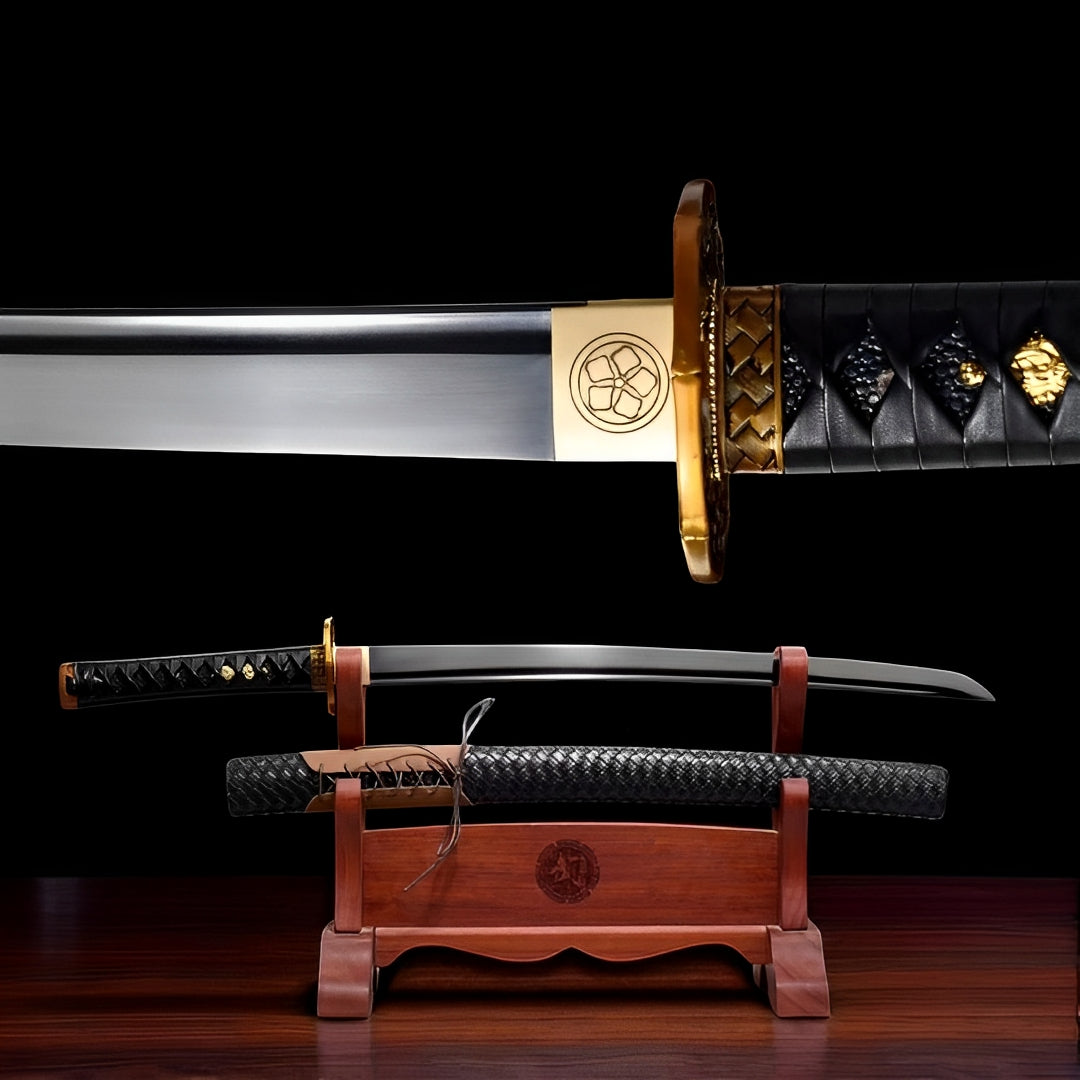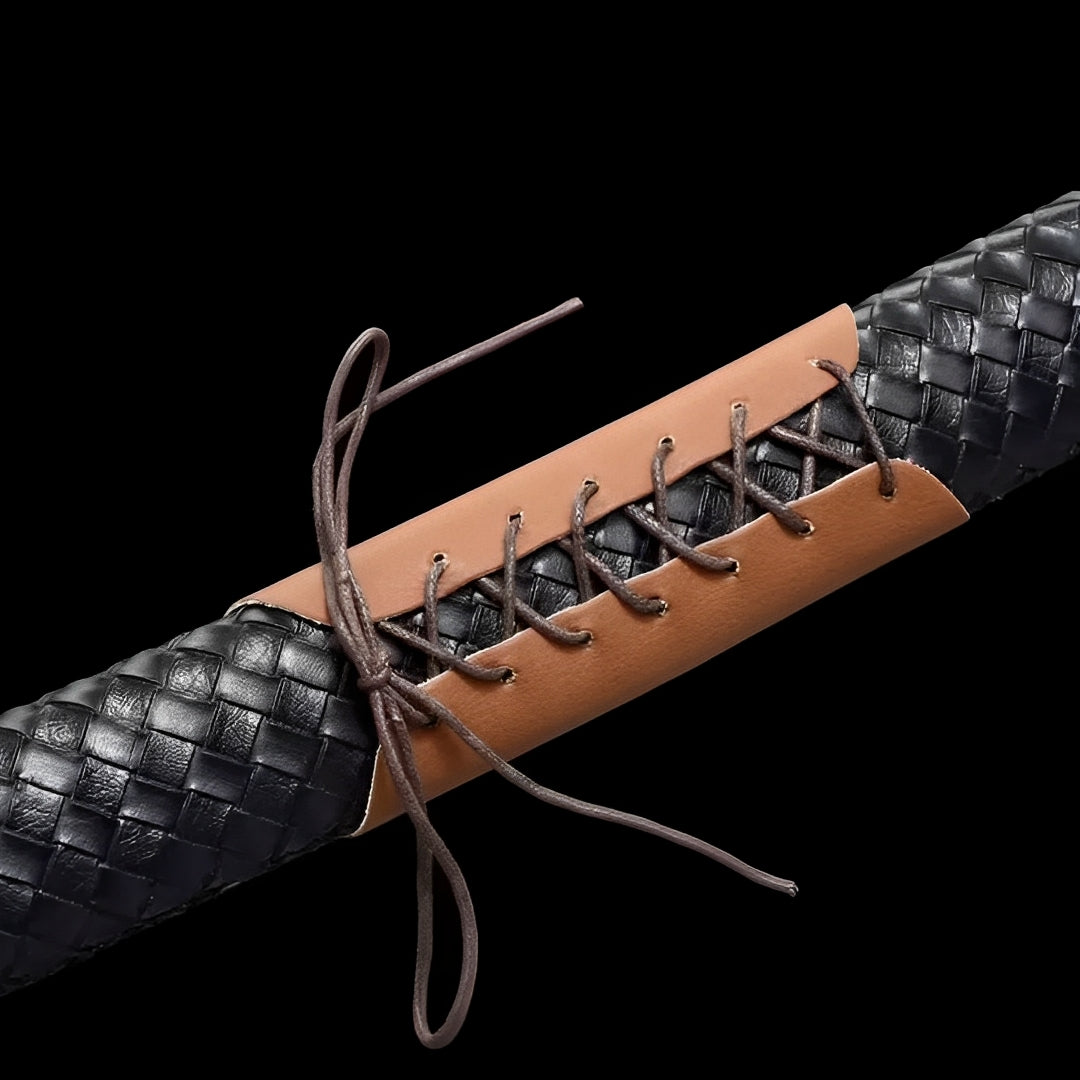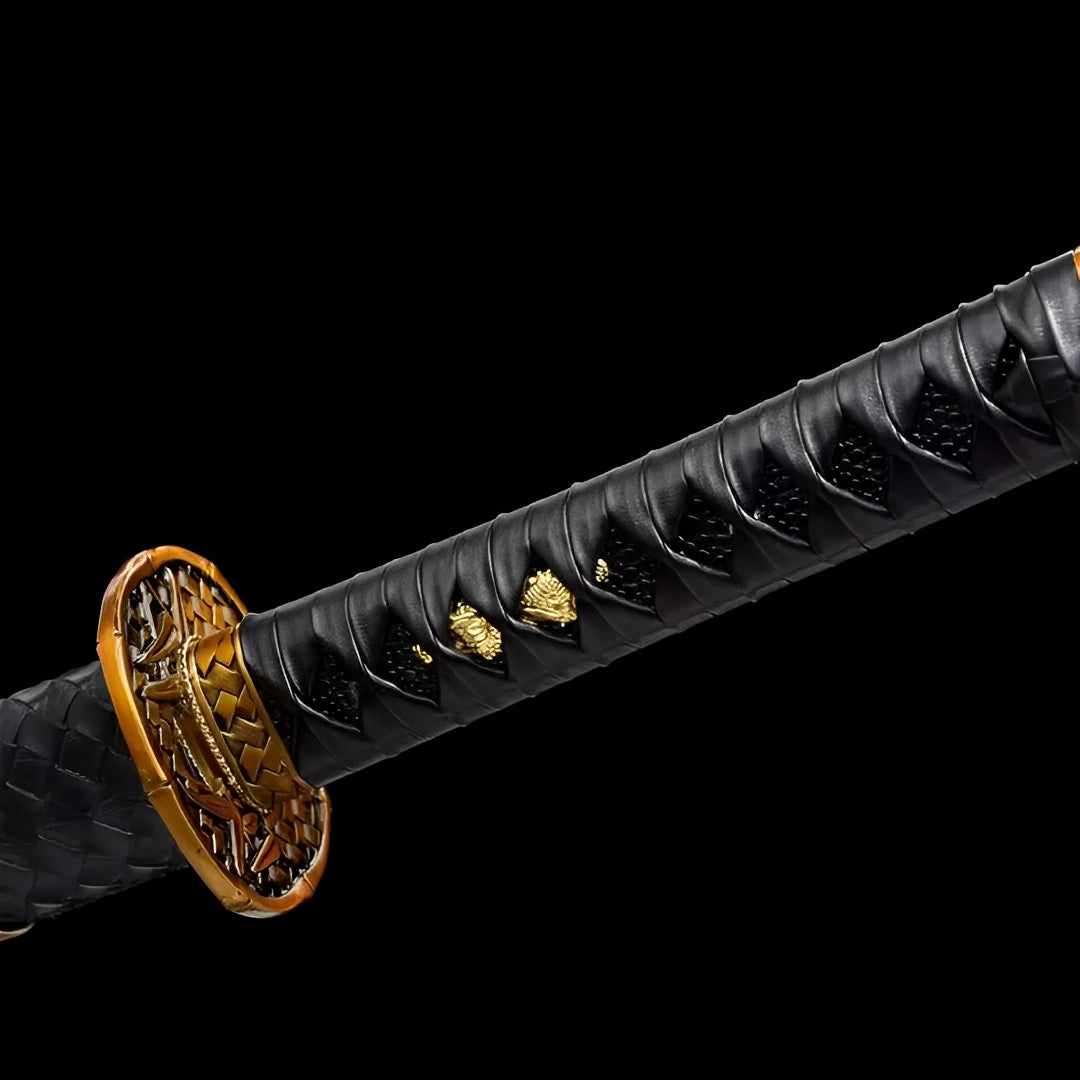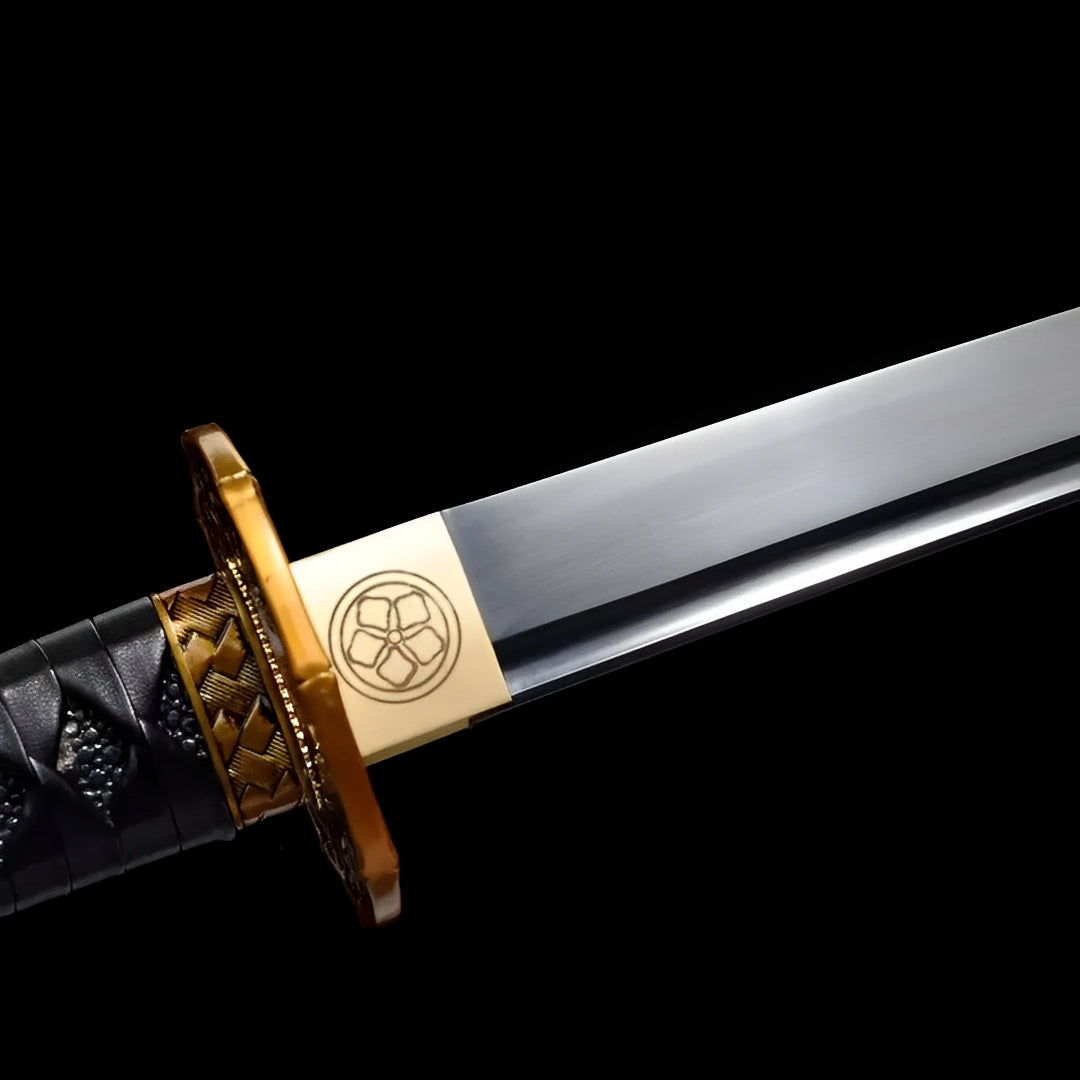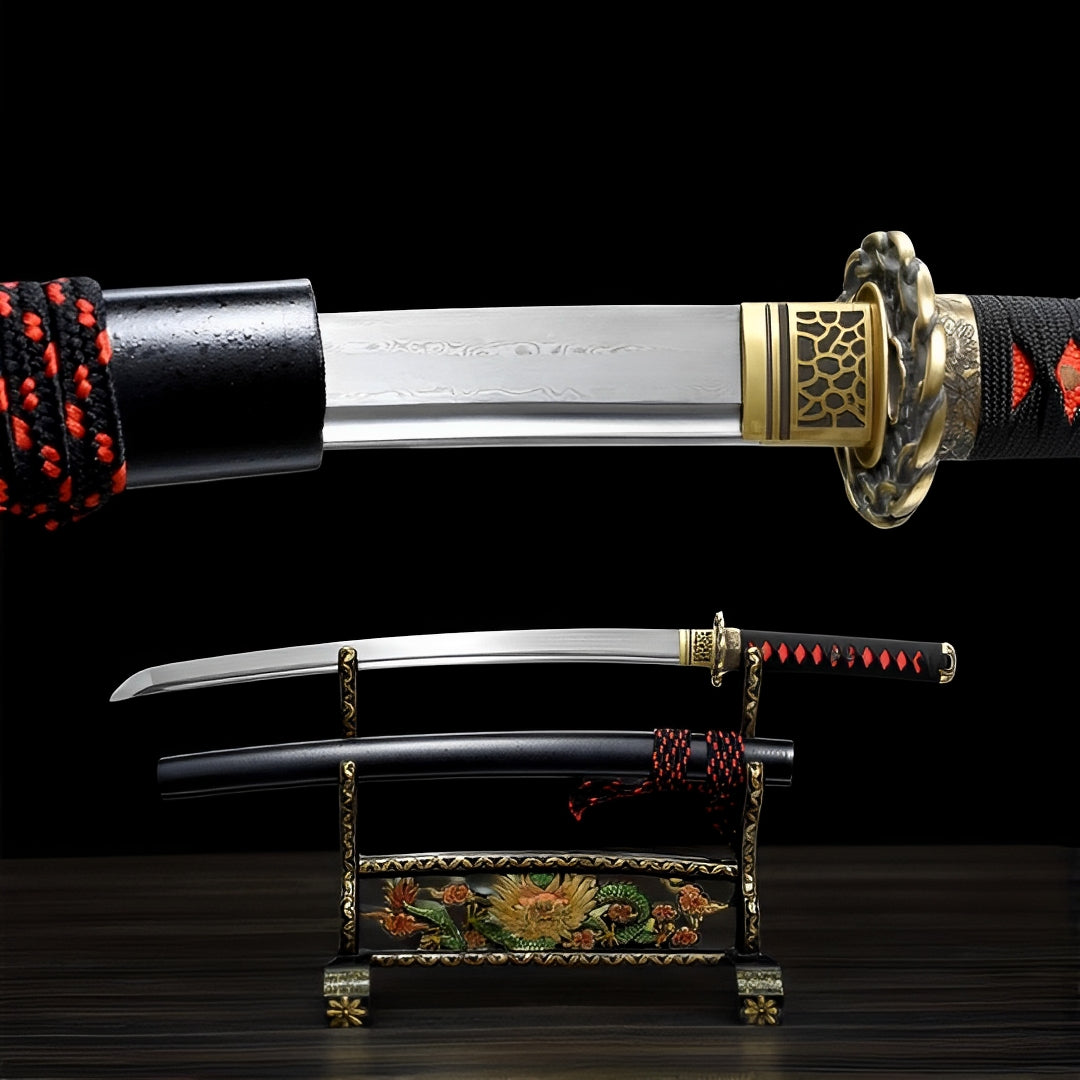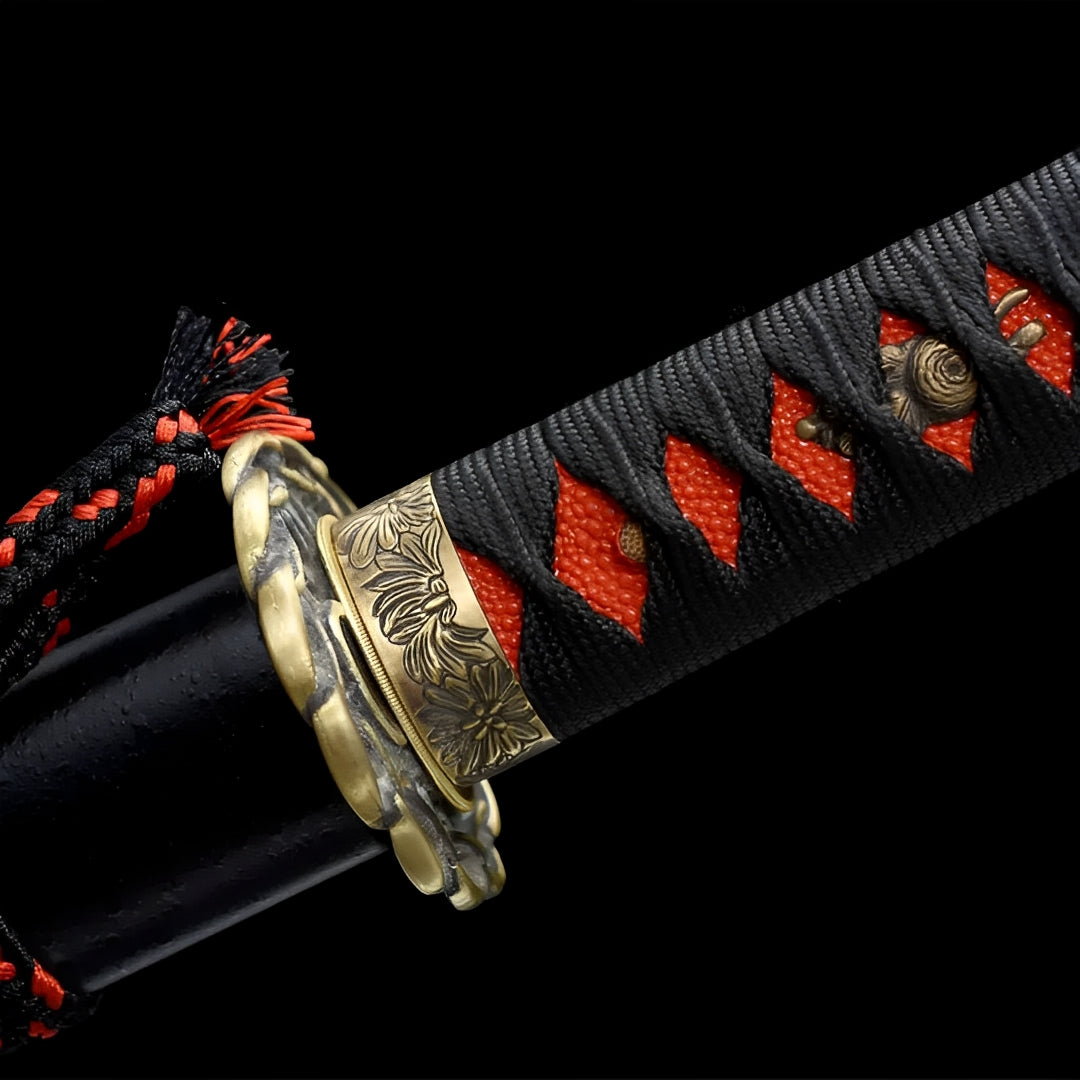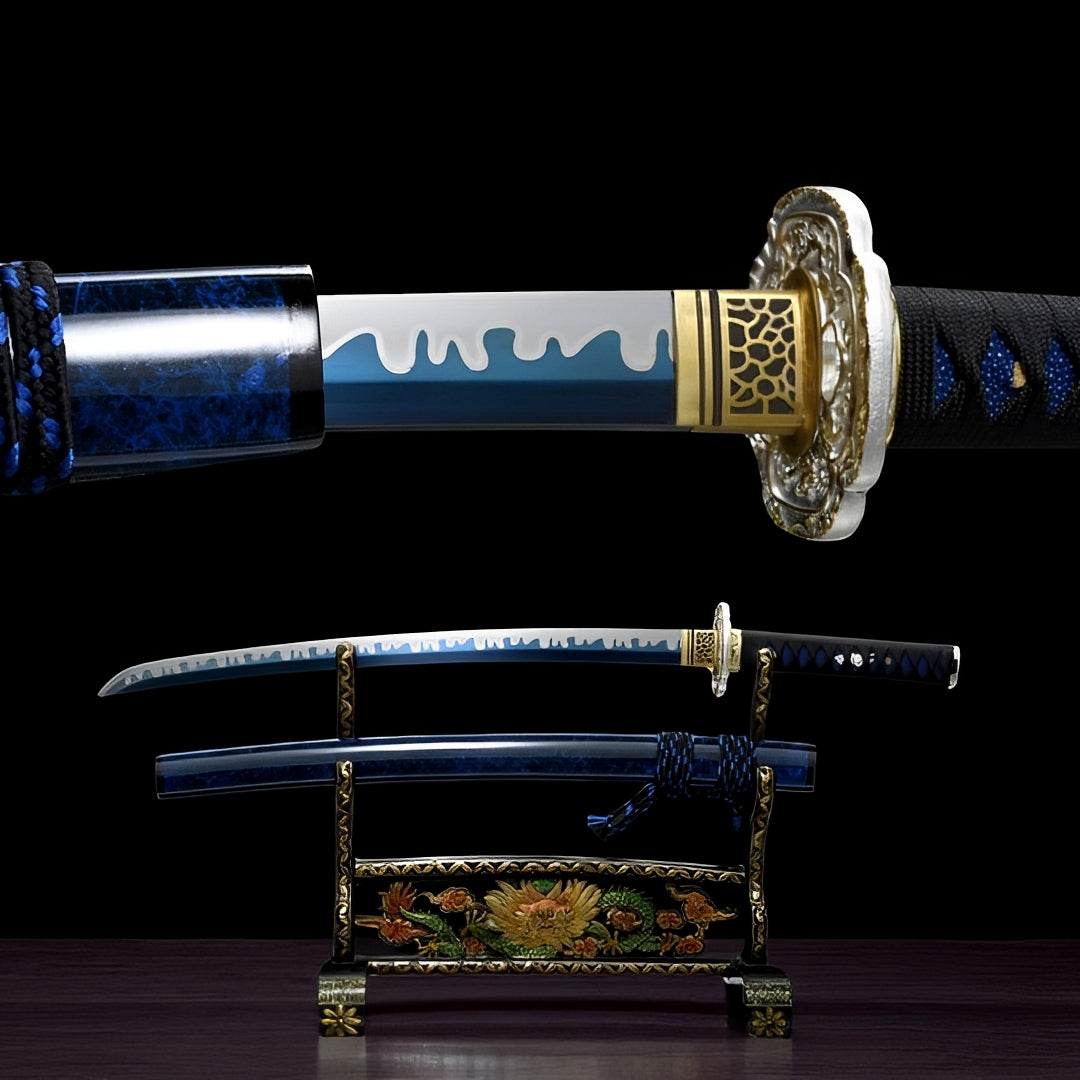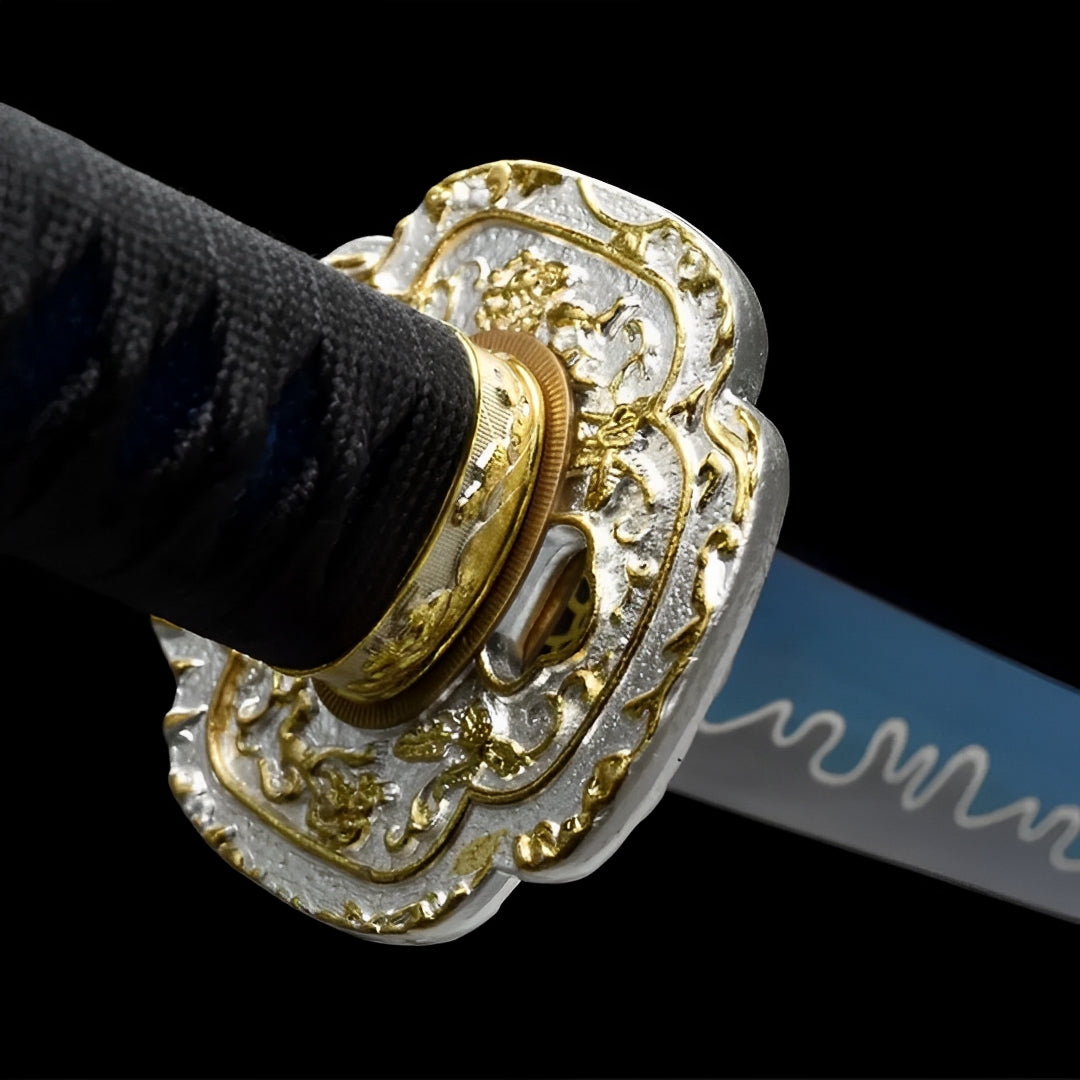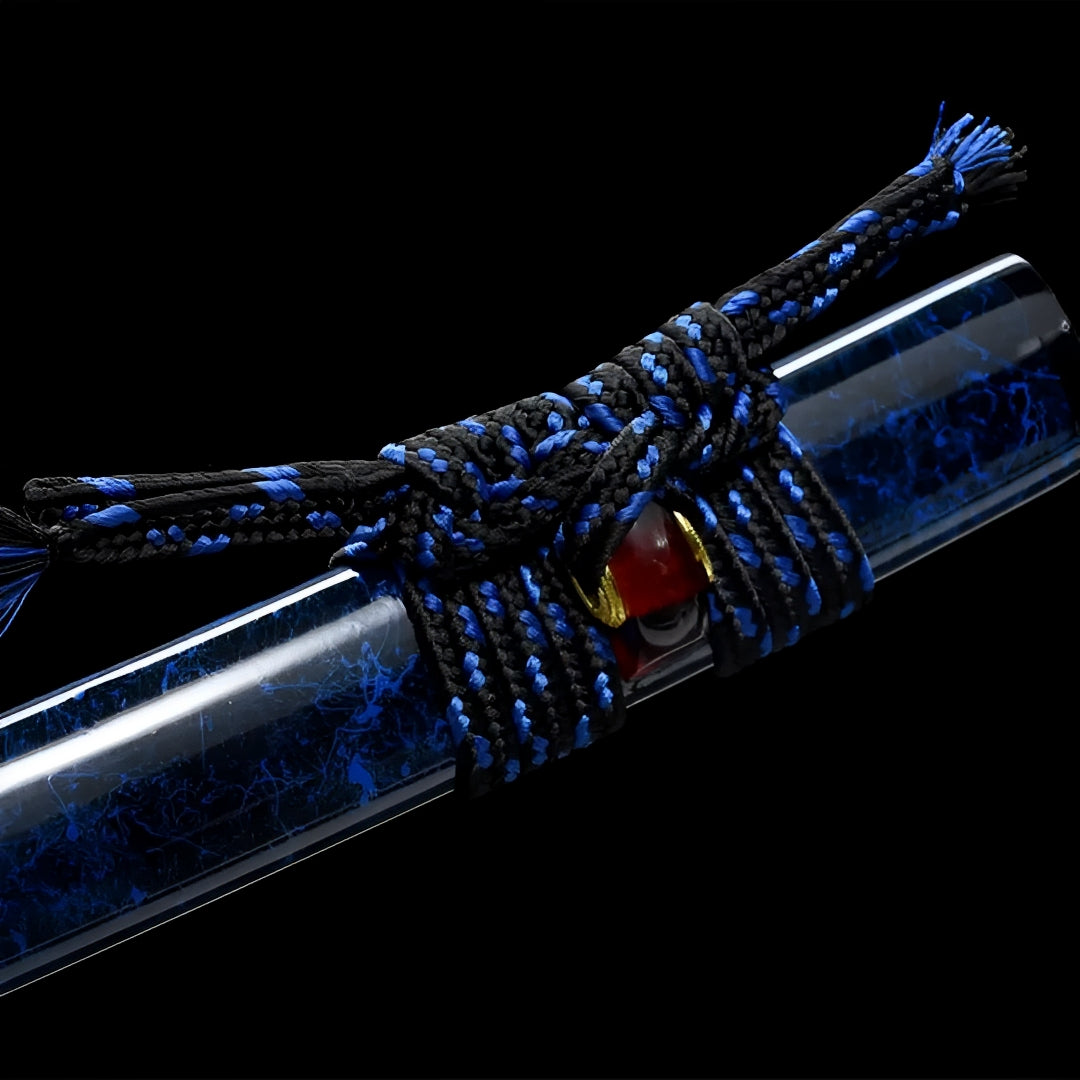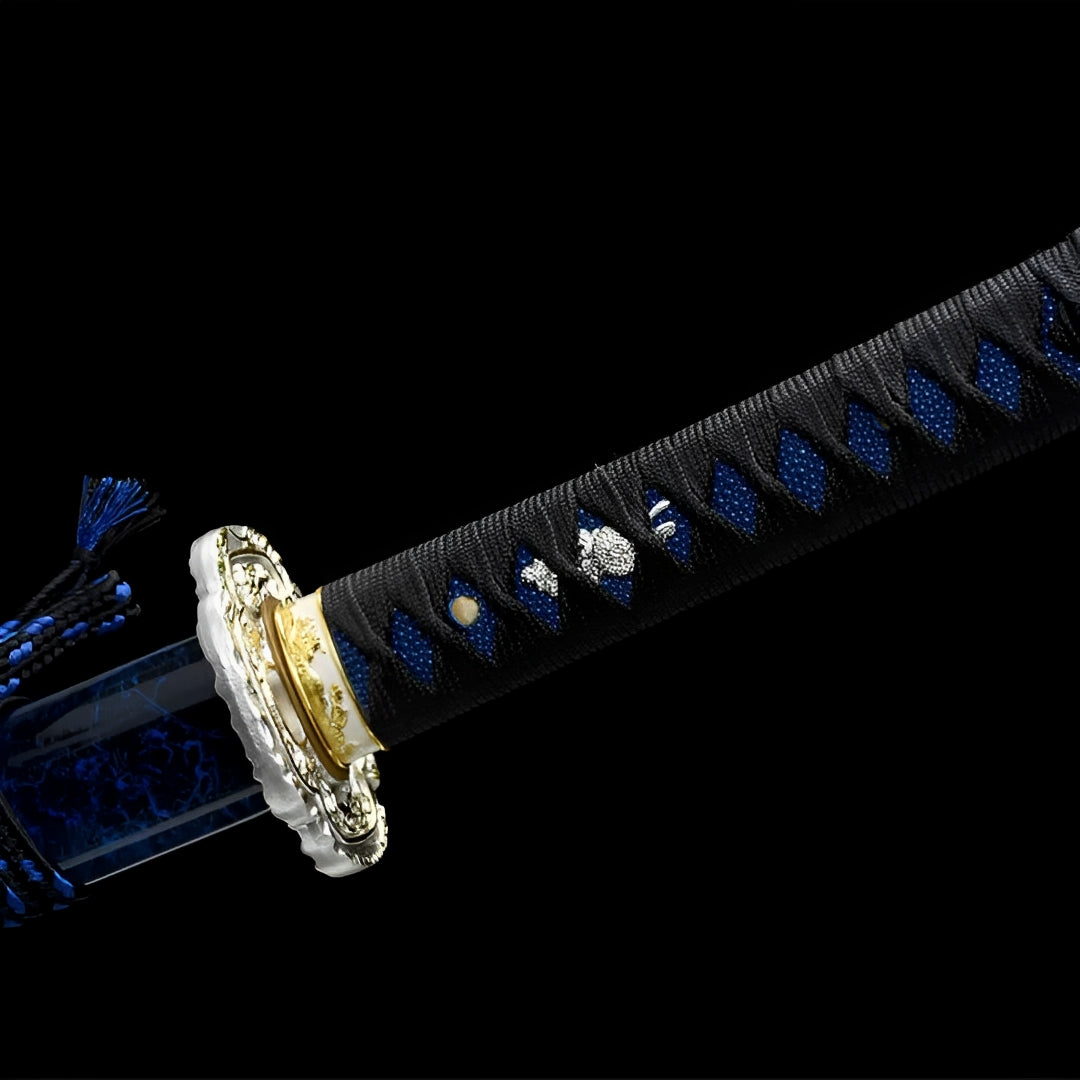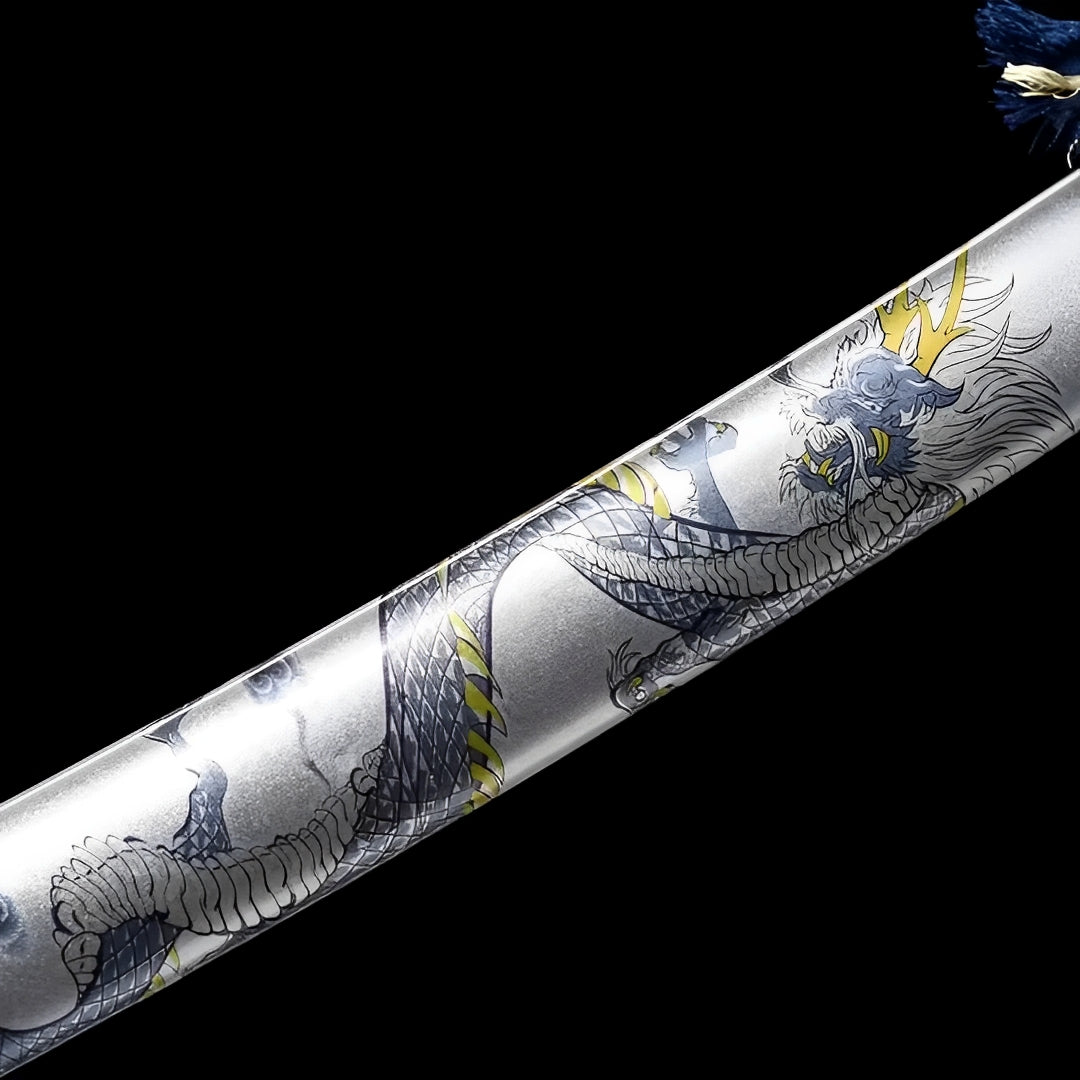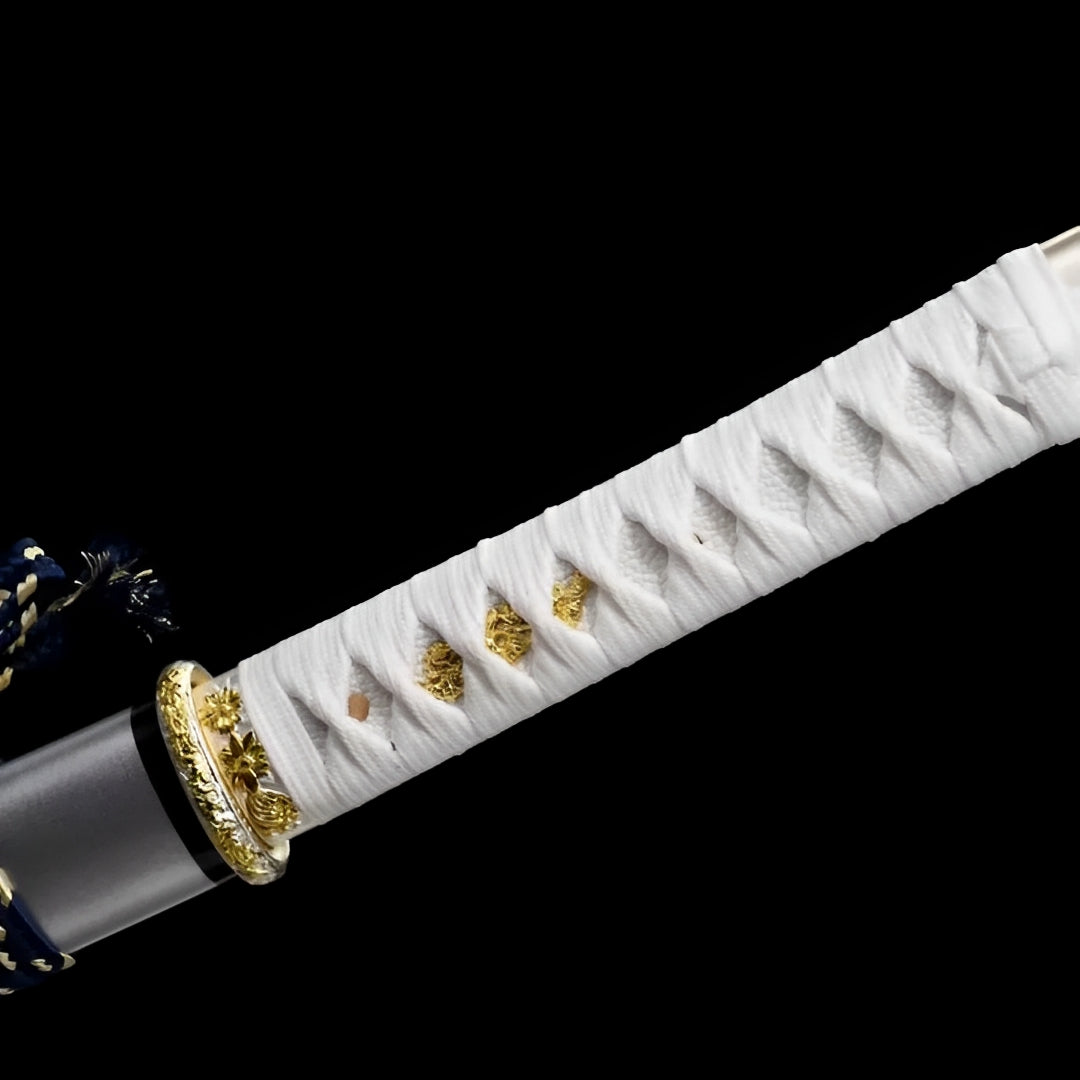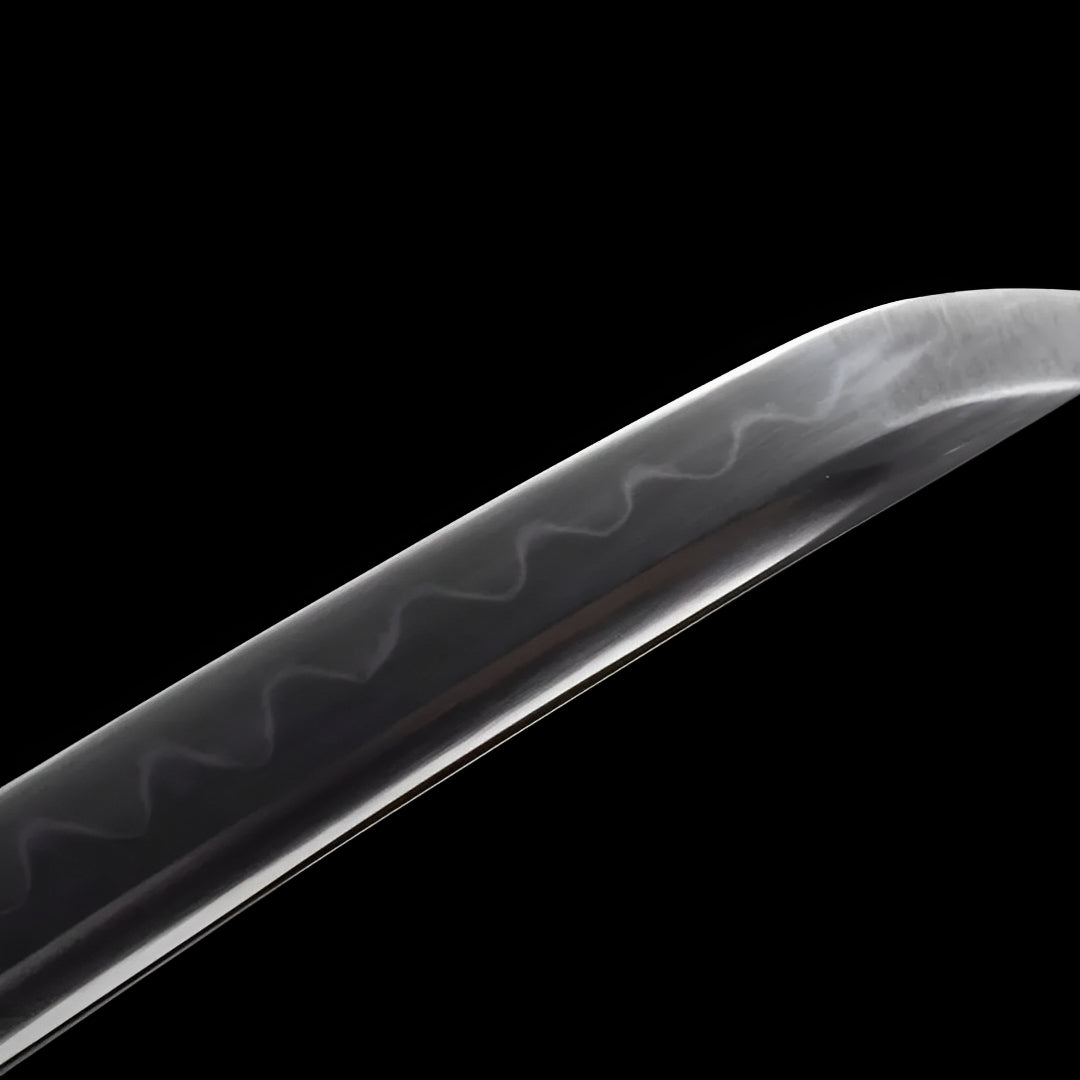Kurohana Wakizashi (Carbon Steel) - 黒華の
Ships within 24h
Forged Blade
Collector Quality
Trusted Globally
Inspired by Japan
Shinku Wakizashi (Damascus Steel) - 真紅の
Ships within 24h
Forged Blade
Collector Quality
Trusted Globally
Inspired by Japan
Aonami Wakizashi (T10 Steel) - 青波
Ships within 24h
Forged Blade
Collector Quality
Trusted Globally
Inspired by Japan
Tsukihana Wakizashi (T10 Steel) - 月華
Ships within 24h
Forged Blade
Collector Quality
Trusted Globally
Inspired by Japan
The wakizashi sword is much more than a sword
The wakizashi is not just a smaller blade, it embodies the precision and spirit of Japanese sword-making. With its curved, compact form, typically 12 to 24 inches (30 to 60 cm), it was worn tucked into the obi, always ready for a swift and decisive draw.
Imagine a samurai preparing at sunrise, the shorter blade by his side, forming with his katana the legendary daishō, a symbolic pairing that reflected not only combat readiness, but rank and personal identity.
What exactly is a wakizashi?
The wakizashi is a traditional Japanese sword, mid-sized between the tanto and the katana, with a length ranging from 12 to 24 inches (30 to 60 cm).
Smaller than the katana, its elegant profile made it ideal for confined spaces and quick-draw situations. The sword’s tsuba (guard) often featured intricate artwork, proof of the immense skill and artistic expression of Japanese swordsmiths.
Unlike the katana, which was restricted to the upper warrior class, the wakizashi could be carried by commoners and merchants. Its accessibility contributed to its widespread popularity in feudal Japan.
The samurai wore it alongside the katana to form the daishō, the most iconic weapon set of the era. Its smaller counterpart, the tanto, served for stabbing or ritual acts, but the wakizashi stood out as the perfect balance of utility and grace.
A story woven into samurai tradition
Deeply embedded in Japanese history, the wakizashi became a companion blade not only for warriors, but also for craftsmen, travelers, and city dwellers. When katana ownership was legally restricted, the wakizashi provided both defense and dignity to those outside the warrior class.
In time, it became far more than a weapon. It was a symbol of honor, a tool in rituals like seppuku, and a vital part of the samurai identity, even when indoors or off the battlefield.
Though modest in size, the wakizashi commanded deep respect throughout Japanese society.
Artisanal excellence and technical precision
Creating a wakizashi is a sacred process that reflects the height of Japanese metallurgy. Despite its shorter size, the blade demands just as much attention and craftsmanship as any katana.
Here’s what defines the creation of a quality wakizashi:
-
Steel selection: High-carbon or Damascus steel is chosen for its strength and edge retention
-
Traditional folding: Dozens of folds create layered patterns and reinforce the structure
-
Controlled tempering: This process gives the blade its flexibility and cutting power
-
Hand polishing: The final stage reveals the hada (grain) and unique hamon line
Every curve, every edge, every reflection in the blade tells the story of fire, steel, and centuries-old know-how.
The different styles of wakizashi
The wakizashi exists in multiple forms, each with a specific purpose and design:
-
Combat wakizashi: Designed for close-quarter fighting, often used with the katana for dual-sword techniques. Lightweight, fast, and deadly.
-
Ceremonial wakizashi: Embellished with ornate fittings, engraved blades, and luxurious finishes. Often used in rituals or formal dress.
-
Collector’s wakizashi: Made by master smiths with high-end materials, these pieces are true investments, swords that hold historical and artistic value.
Each variation honors a different facet of the sword’s legacy, from the battlefield to the showcase.
A perfect balance between size and utility
The wakizashi’s strength lies in its versatility. Sitting between the long katana and the short tanto, most models range from 16 to 20 inches (40 to 50 cm).
This makes them:
-
Easy to maneuver in tight or indoor spaces
-
Quick to draw and strike with one hand
-
Balanced enough to complement a katana in dual-wielding combat
Whether in defense, ritual, or display, the wakizashi adapts without ever compromising its function or elegance.
Fighting styles and historical uses
More than just a sidearm, the wakizashi was a tactical tool shaped by centuries of battlefield experience.
Its uses included:
-
Indoor defense: Ideal for confined spaces where a katana’s length would be a disadvantage
-
Surprise strikes: Lightweight and balanced, perfect for sudden, accurate slashes
-
Dual wielding: Paired with the katana in the daishō style, balancing reach with agility
Martial artists and historians alike recognize the wakizashi’s role in shaping Japanese swordplay and tactical tradition.
Every blade in our collection has its own soul
Each wakizashi we offer is steeped in history and crafted with reverence for Japanese tradition. You’ll find swords that merge artistry, symbolism, and functionality:
-
Decorated blades: With engravings, polished hamon lines, and folded steel patterns
-
Authentic handles: Wrapped in ray skin, cotton, or silk using traditional tsuka-maki techniques
-
Refined scabbards: From minimalist black lacquer to richly ornamented saya with inlays and carvings
Our collection isn’t just about beauty, it’s about storytelling through steel.
Caring for your blade with respect
Like any living artifact, a wakizashi requires care and attention to remain timeless. Here’s how to preserve its beauty and function:
-
Avoid humidity: Store in a dry, ventilated space to prevent rust
-
Clean regularly: Use a soft cloth and a few drops of choji or mineral oil
-
Handle mindfully: Keep fingers off the blade to avoid acid and moisture damage
-
Store properly: Blade edge up, in its saya, away from direct sunlight or dust
Maintaining your wakizashi is a gesture of respect, for the sword, the craft, and the legacy it carries.
A price that reflects its legacy
Owning a wakizashi is more than a purchase, it’s a tribute to centuries of culture, technique, and samurai spirit.
Our offerings include:
-
Entry-level models: Affordable, functional, and rooted in traditional designs
-
Artisan-forged swords: With attention to every detail, these pieces reflect mastery
-
Exceptional collectibles: For those who seek rarity, history, and investment value
Every price reflects more than just steel, it honors the time, tradition, and story behind each blade.
Why a wakizashi is worth owning
A wakizashi is not just a sword. It’s a companion to the katana, a symbol of inner discipline, and a window into one of the richest martial traditions in history.
Whether you’re a martial artist, a collector, or simply someone drawn to the aesthetics of ancient Japan, the wakizashi offers something timeless. Strength without arrogance. Grace without excess. Power, quietly waiting to be called upon.
This is more than a blade. It’s a piece of eternity.
+ View more
